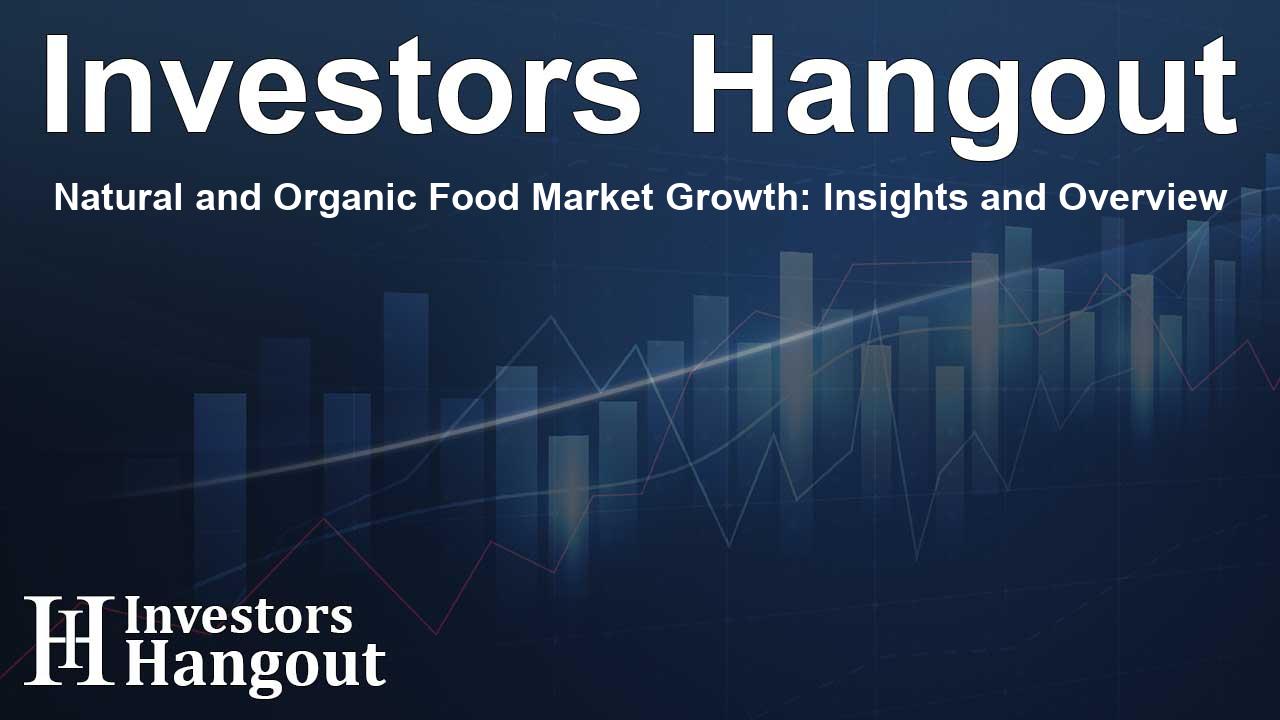Natural and Organic Food Market Growth: Insights and Overview

Exploring the Growth of the Natural and Organic Food Market
The natural and organic food market is witnessing remarkable expansion, primarily due to an increase in consumer awareness about health and wellness. With more people seeking clean-label products, there's a clear shift towards sustainable and organically sourced food options. This growth is further supported by improvements in organic farming practices and the widening availability of these products in retail spaces, making them easier to access. However, the market does face challenges, including higher production costs and a limited supply of organic ingredients, which can result in increased prices for consumers. Furthermore, regulatory hurdles and inconsistent organic certification standards may slow down market growth.
Market Overview and Projections
Globally, the natural and organic food market is set to grow at a compound annual growth rate (CAGR) of 14% from 2024 to 2030. Currently valued at USD 231.53 billion, the market is expected to reach USD 419.56 billion by the end of this projected period. This swift growth underscores an increasing consumer focus on healthier lifestyles, confirming that this demand is now a mainstream expectation rather than just a niche interest.
Drivers Fueling Market Expansion
One of the main factors propelling this sector is the growing consumer awareness around health and wellness. Many individuals actively seek natural and organic foods, viewing them as healthier alternatives to conventional products. This trend is reinforced by concerns over synthetic additives, pesticides, and genetically modified organisms (GMOs), which some people believe can harm health. As this awareness continues to spread, the market for healthier food options is set to grow.
Sustainability and Environmental Considerations
The natural and organic food market is also shaped by environmental issues. More consumers are making purchasing decisions based on a product's environmental impact, often opting for organic options that follow sustainable farming practices. This typically means less reliance on synthetic fertilizers and a commitment to responsible land use, aligning with many consumers' desire for eco-friendly choices. As urgent issues like climate change become more pressing, this segment of the market is likely to thrive.
Challenges Facing the Natural and Organic Food Market
Despite its impressive growth, the natural and organic food market confronts several challenges that may hinder its expansion. One key issue is the higher cost of production associated with organic farming, which requires pricier inputs and labor-intensive methods. As a result, consumers often face higher prices, which can discourage those who are more price-sensitive, limiting the market's reach.
Supply Chain Hurdles
This market often faces challenges related to supply chain infrastructure. Natural and organic products need careful handling to preserve their quality, but many supply chains are not adequately prepared for these requirements. Additionally, maintaining organic certification throughout the supply chain necessitates strict compliance with regulations, complicating the overall distribution process.
Market Fragmentation Issues
Market fragmentation adds to the difficulties experienced by the industry. The lack of standardized regulations can confuse consumers, potentially leading to a lack of trust in brands. Differing definitions of “organic” in various regions can further complicate the landscape, inhibiting growth and market consistency.
Regional Insights into Market Growth
The natural and organic food market displays notable regional diversity, with North America, Europe, Africa, and Asia all experiencing significant growth. In North America, a shift towards healthier eating has driven a notable rise in demand for organic products. Europe focuses heavily on sustainability and has stringent regulations for organic foods, while Africa's emerging markets are slowly adopting organic practices, enriching the market landscape further.
In Asia, the fast-growing middle class and shifting consumption habits indicate a rising demand for health-conscious products. Together, these regions are reshaping the organic food market, each bringing unique advantages that support growth.
Key Players Influencing the Market
Several important players are crucial in shaping the natural and organic food market, including Spartan Stores, Hain Celestial, United Natural Foods, Amy's Kitchen, and Whole Foods, among others. These companies are constantly innovating and adapting to meet the ever-evolving demands of consumers. Their financial well-being and product offerings have a considerable influence on market dynamics.
Market Segmentation Overview
The natural and organic food market is divided into segments based on type, application, and geography. Consumers can select from both natural and organic food options, with applications extending from grocery stores to online marketplaces. Understanding these segments helps stakeholders develop effective strategies tailored to their needs.
Frequently Asked Questions
What is driving the growth of the natural and organic food market?
The growth is largely driven by rising consumer health awareness and demand for environmentally friendly food options.
What challenges face the natural and organic food market?
High production costs, supply chain inefficiencies, and market fragmentation can pose significant challenges.
What key regions are influencing market growth?
North America, Europe, Africa, and Asia are the major regions driving growth in the market.
Who are the top players in the natural and organic food market?
Major players include Spartan Stores, Hain Celestial, and Whole Foods, among others.
How is the market expected to perform in the coming years?
The market is projected to grow at a CAGR of 14%, reaching USD 419.56 billion by the end of the forecast period.
About The Author
Contact Evelyn Baker privately here. Or send an email with ATTN: Evelyn Baker as the subject to contact@investorshangout.com.
About Investors Hangout
Investors Hangout is a leading online stock forum for financial discussion and learning, offering a wide range of free tools and resources. It draws in traders of all levels, who exchange market knowledge, investigate trading tactics, and keep an eye on industry developments in real time. Featuring financial articles, stock message boards, quotes, charts, company profiles, and live news updates. Through cooperative learning and a wealth of informational resources, it helps users from novices creating their first portfolios to experts honing their techniques. Join Investors Hangout today: https://investorshangout.com/
The content of this article is based on factual, publicly available information and does not represent legal, financial, or investment advice. Investors Hangout does not offer financial advice, and the author is not a licensed financial advisor. Consult a qualified advisor before making any financial or investment decisions based on this article. This article should not be considered advice to purchase, sell, or hold any securities or other investments. If any of the material provided here is inaccurate, please contact us for corrections.
